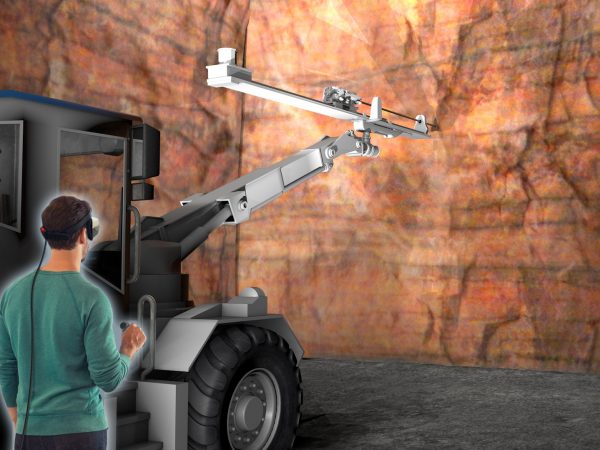At the APCOM 2019 conference in Wroclaw, Poland, Rudolf Suppes and Yannick Feldmann from the Institute of Mineral Resources Engineering (MRE), part of RWTH Aachen University, presented the latest info on its VR-Mine project. Virtual Reality (VR) is becoming increasingly popular in different domains such as industrial training, academic research and tertiary education.
For prospective mining engineers, practical experience, a comprehensive understanding of complex three-dimensional processes as well as technical-human-environmental interdependencies are a crucial skillset. These aspects are difficult to convey in traditional university teaching. In this context, the benefits of VR are the possible direct 3D immersion into locations that are remote, too costly to visit and/or unsafe. Furthermore, VR-based learning increases the learner’s involvement and motivation while widening the range of supported learning styles. To improve future graduate education, an informative and interactive underground VR environment is being developed, called the VR-Mine.
VR-Mine is based on the concepts of blended learning, gamification and flipped classroom, and focusses on the topics health and safety, and principles of underground mining. During the self-study phase, the students immerse into the virtual environment where they are led through various scenarios. They are given the task to work through specific chapters and to solve simulated problems afterwards. Switching among sub-topics is enabled and each student can take the time required to complete the chapters. Hence, the students can deal with potential issues of comprehension proactively. This is opposed to classical teaching where a limited linear time schedule is followed.
The benefit of this approach is the combination of knowledge transfer and immediate application. Thus, it is expected that this will support problem-based learning and enhance critical thinking. The overall goal is not only to transform the knowledge transfer in a digitalised world but also to enable students to widen their experience by visiting different virtual mine sites which are based on existing mines. Since every mine has its own characteristics, a variety of individual mining-related phenomena can be observed, supporting the development of a profound understanding of the processes in underground mining.
“To date, the photogrammetry-based 3D scene development of the Mittersill mine is nearly complete, the scenarios are built and the transfer of lecture material into them is prepared (platform: Unity engine, Oculus Rift VR goggles). It is envisaged to commence the implementation of VR-Mine into the curricula of the mining engineering graduate programmes at RWTH Aachen University and TalTech University in Autumn 2019. An application of at other universities or in the industry is planned in the medium-term after a successful evaluation. In the industry, this could help to increase health and safety standards due to specialised training of new workforce or for training workers for new tasks in an environment where mistakes can be made without consequences.”











